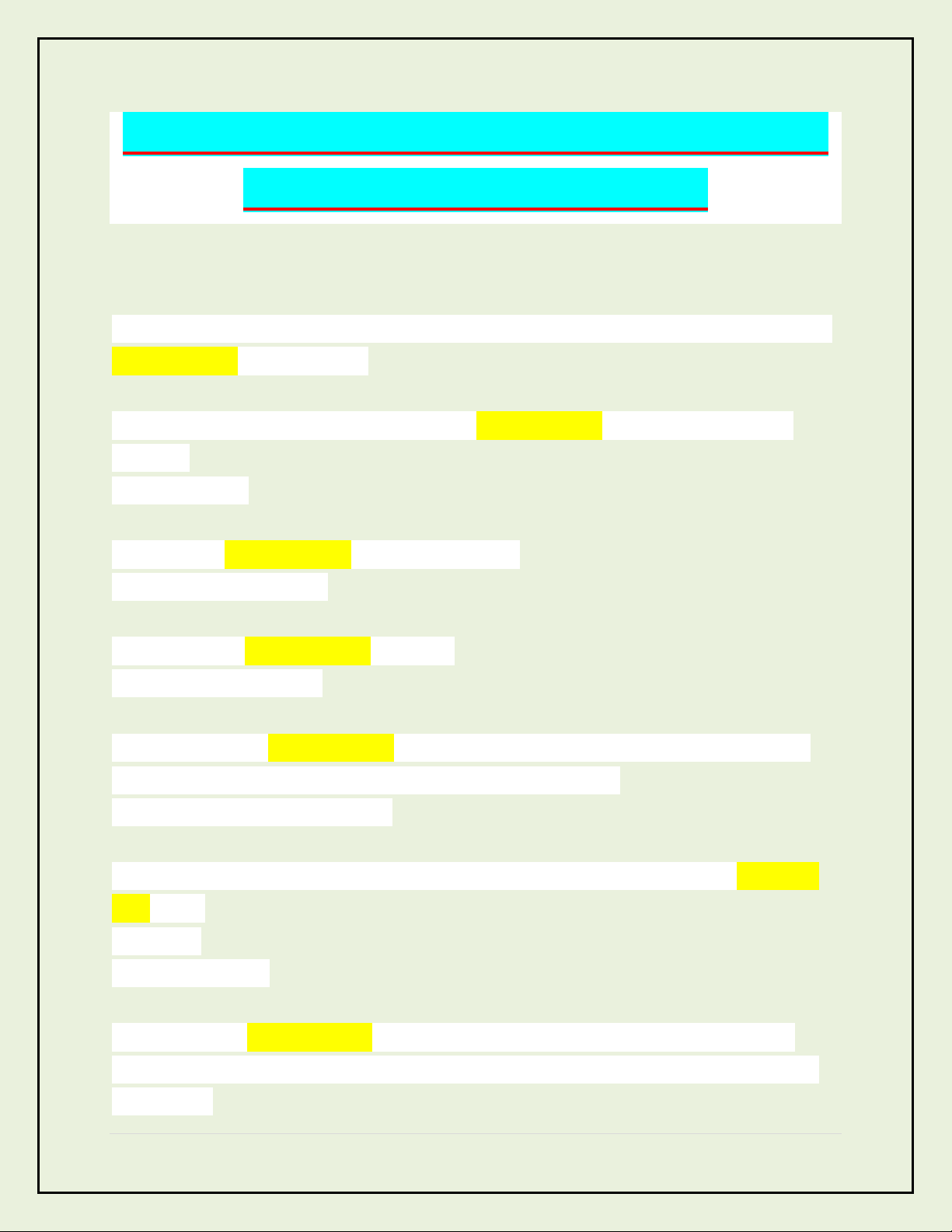
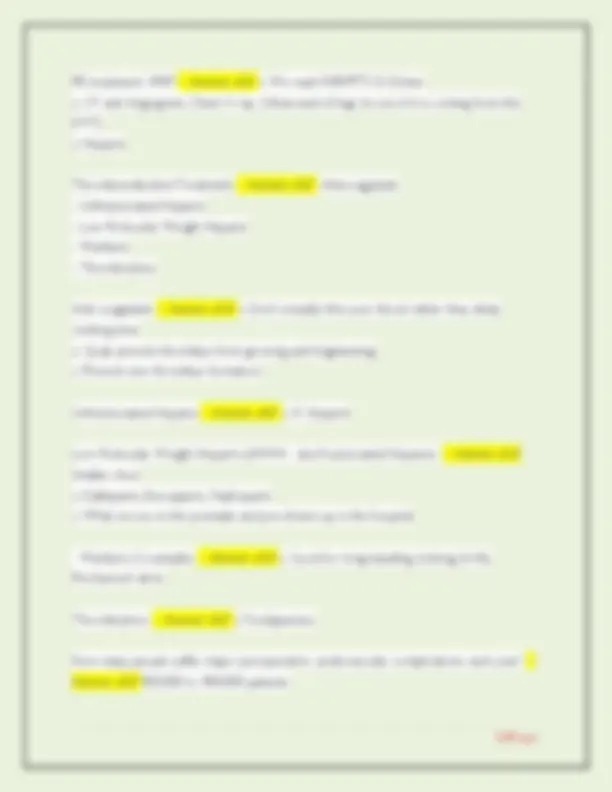
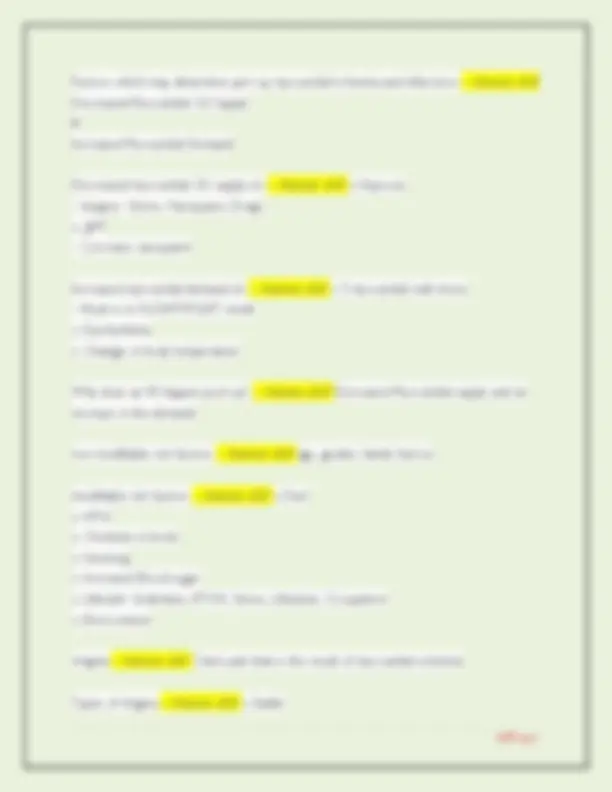
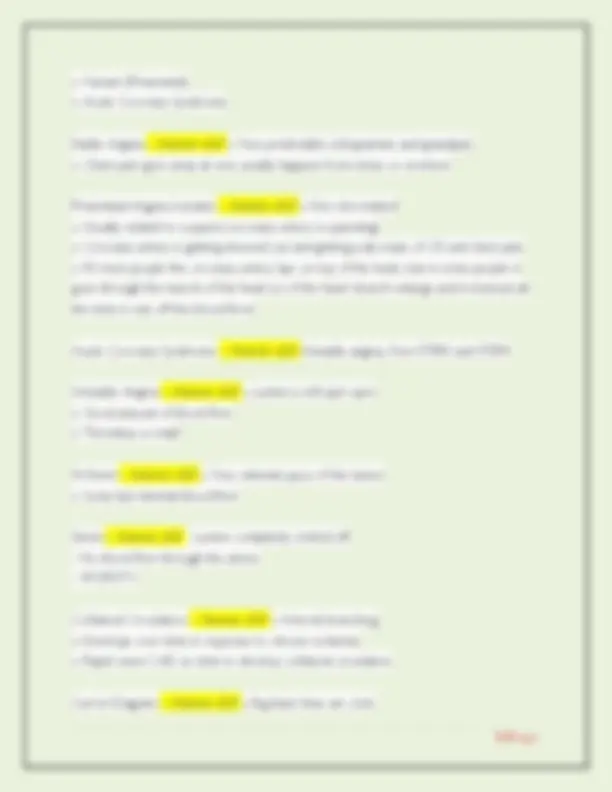
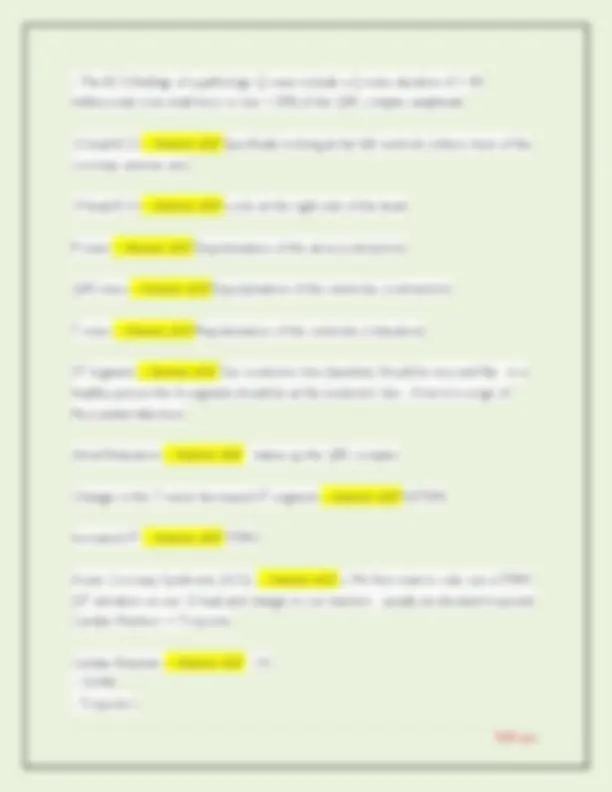
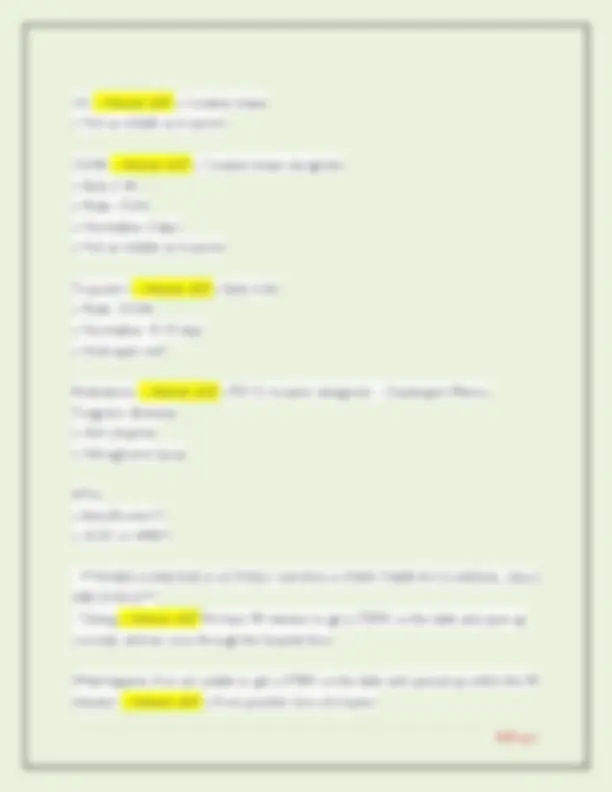
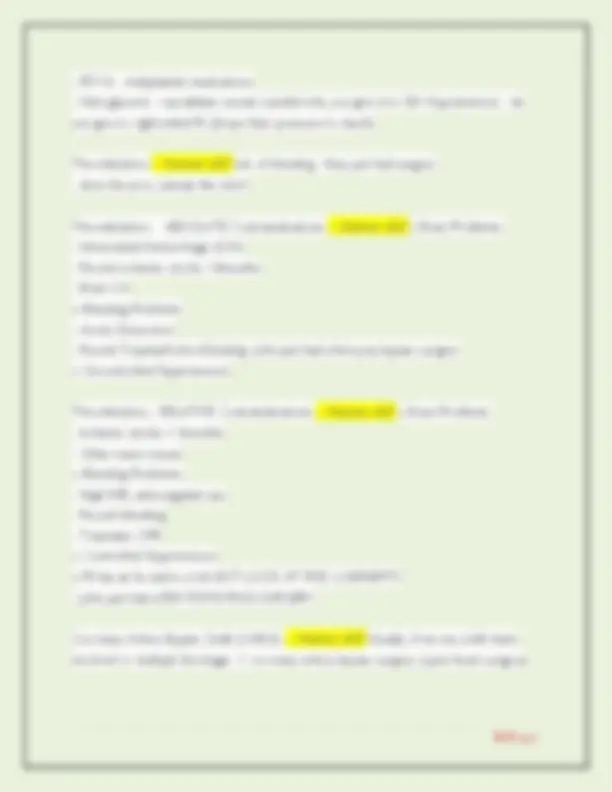


Study with the several resources on Docsity

Earn points by helping other students or get them with a premium plan


Prepare for your exams
Study with the several resources on Docsity

Earn points to download
Earn points by helping other students or get them with a premium plan
Community
Ask the community for help and clear up your study doubts
Discover the best universities in your country according to Docsity users
Free resources
Download our free guides on studying techniques, anxiety management strategies, and thesis advice from Docsity tutors
A series of questions and answers related to acute coronary syndrome (acs), focusing on assessment, predisposing factors, treatment, and ecg interpretation. It covers topics such as atherosclerosis, virchow's triad, pulmonary embolism (pe), and the role of cardiac markers in diagnosing acs. Designed to help students in nrsg 327 understand the key concepts and clinical aspects of acs.
Typology: Exams
1 / 11

This page cannot be seen from the preview
Don't miss anything!







What assessment do you want to make sure you do when assessing chest pain post-op? -- Answer ✔✔ Pain assessment What systems can contribute to chest pain? -- Answer ✔✔ - Anxiety/mental health
Virchow’s Triad -- Answer ✔✔ o Venous Stasis o Vessel wall o Coagulation Changes in Venous statis -- Answer ✔✔ Immobility, obesity, increase age (various veins) Changes in vessel wall -- Answer ✔✔ Trauma, surgery (which is a trauma) Changes in coagulation -- Answer ✔✔ Surgery (giving heparin, holding onto their anticoagulants), pregnancies, massive change in diet, infections PE caused by: -- Answer ✔✔ Obstruction of the pulmonary artery or one of its branches by a thrombi
Factors which may determine peri-op myocardial ischemia and infarction: -- Answer ✔✔ Decreased Myocardial O2 Supply & Increased Myocardial Demand Decreased myocardial O2 supply s/s -- Answer ✔✔ o Hypoxia
o Variant (Prinzmetal) o Acute Coronary Syndrome Stable Angina -- Answer ✔✔ o Very predictable (old grannies and grandpas) o Chest pain goes away at rest, usually happens from stress or exertion Prinzmetal Angina (variant) -- Answer ✔✔ o Not clot-related o Usually related to a spasm (coronary artery is spasming) o Coronary artery is getting stressed out and getting a decrease of O2 and chest pain o IN most people the coronary artery lays on top of the heart, but in some people it goes through the muscle of the heart (so if the heart doesn't enlarge and it stressed all the time it cuts off the blood flow) Acute Coronary Syndrome -- Answer ✔✔ Unstable angina, Non-STEMI and STEMI Unstable Angina -- Answer ✔✔ o Lumen is still quit open o Good amount of blood flow o Thrombus is small N-Stemi -- Answer ✔✔ o Very minimal space of the lumen o Some but minimal blood flow Stemi -- Answer ✔✔ - Lumen completely clotted off
o 12 lead ECG
Key points -- Answer ✔✔ o Really good assessment including thorough PAIN ASSESSMENT o 12 lead ECG o Cardiac enzymes - mainly troponin o P2Y12 & ASA are key!!! o Get intervention: TNKase, PCI, and/or CABG